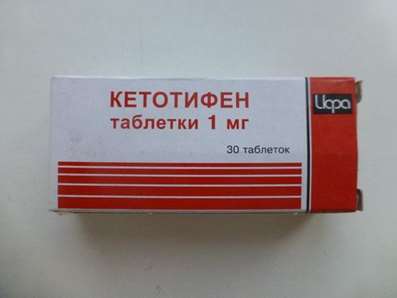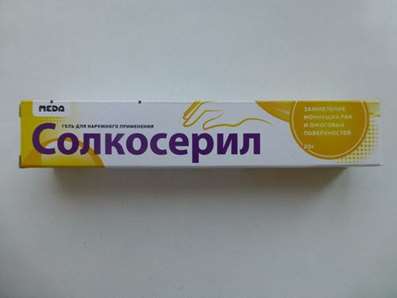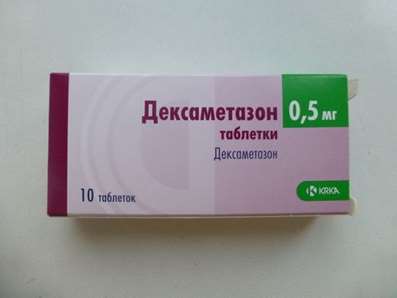Instruction for use: Abatacept
I want this, give me price
Trade name of the drug – Orensia
The Latin name of the substance Abatacept
Abataceptum (genus. Abatacepti)
Pharmacological group:
Immunosuppressive drugs
The nosological classification (ICD-10)
M06.9 Rheumatoid arthritis, unspecified: Rheumatoid arthritis; Pain syndrome in rheumatic diseases; Pain in rheumatoid arthritis; Inflammation in rheumatoid arthritis; Degenerative forms of rheumatoid arthritis; Children's rheumatoid arthritis; Exacerbation of rheumatoid arthritis; Acute articular rheumatism; Rheumatic arthritis; Rheumatic polyarthritis; Rheumatoid arthritis; Rheumatic polyarthritis; Rheumatoid arthritis; Rheumatoid arthritis; Rheumatoid arthritis of active course; Rheumatoid periarthritis; Rheumatoid polyarthritis; Acute rheumatoid arthritis; Acute rheumatism
M08 Juvenile [juvenile] arthritis: Juvenile arthritis; Juvenile chronic polyarthritis; Juvenile chronic arthritis; Juvenile rheumatoid arthritis; Arthritis Juvenile chronic
CAS code
213252-14-3
Characteristics of the substance Abatacept
A recombinant protein with a molecular weight of about 92 Da, obtained by genetic engineering on the isolated cell culture of mammals.
Pharmacology
Mode action - Immunosuppressive.
Pharmacodynamics
Abatacept is a soluble protein consisting of the extracellular domain of 4-cytotoxic T-lymphocyte antigen (CTLA-4) bound to a modified human IgG1 Fc fragment.
Abatacept selectively modulates the key co-stimulatory signal necessary for the complete activation of T-lymphocytes expressing the differentiation cluster 28 (CD28). In patients with rheumatoid arthritis (RA), T-lymphocytes are found in the synovial fluid. Activated T-lymphocytes play an important role in the pathogenesis of rheumatoid arthritis and other autoimmune diseases. For the full activation of T-lymphocytes, 2 signals from antigen-presenting cells are required: the first for the recognition of a specific antigen by T-cell receptors (signal 1); The second (non-specific) costimulatory signal involves the binding of CD80 and CD86 molecules on the surface of antigen presenting cells to the CD28 receptor on the surface of T lymphocytes (signal 2). Abatacept specifically binds CD80 and CD86, selectively inhibiting this pathway. It has been established that abatacept has a greater effect on the response of non-activated (naive) T-lymphocytes than T-lymphocytes of memory.
In in vitro studies and animal models, it has been shown that abatacept reduces T-lymphocyte-dependent antibody production and inflammation. In vitro, abatacept reduces the activation of T lymphocytes, as evidenced by a decrease in proliferation and production of cytokines in human lymphocytes (TNF-α, inferferon-γ and IL-2). In rats with collagen-induced arthritis, abatacept suppresses inflammation, reduces the formation of anti-collagen antibodies, and antigen-specific production of inferferone-γ.
Pharmacokinetics
Pharmacokinetics after SC administration
The pharmacokinetics of abatacept after the sc administration is subject to linear dependence. The mean minimum and maximum Css were established 85 days after initiation of treatment and were 32.5 mkg / ml (6.6-113.8 mkg / ml) and 48.1 μg / ml (9.8-132.4 μg / ml ), Respectively. Bioavailability of abatacept with n / k introduction is 78.6% of its bioavailability when in / in the introduction. The average systemic clearance (0.28 ml / h / kg), Vd (0.11 l / kg), terminal T1 / 2 (14.3 days) is comparable for sc and iv.
It was found that a higher clearance of abatacept is observed in patients with a high body weight. Age and sex of patients (with correction for body weight) did not affect the clearance of abatacept. Simultaneous administration of methotrexate, anti-inflammatory drugs, GCS and TNF blockers did not affect the clearance of abatacept.
Studies to assess the metabolism and elimination of abatacept in humans have not been conducted. In connection with the spatial structure and hydrophilicity, abatacept is not metabolized in the liver by enzymes of the cytochrome P450 system. Given the large molecular weight of abatacept, it is suggested that abatacept is not excreted in the urine.
Special patient groups
Studies on the evaluation of the effects of renal and hepatic impairment on the pharmacokinetics of abatacept after SC administration have not been conducted.
Pharmacokinetics after intravenous administration
With repeated intravenous administration (days 1, 15, 30, then every 4 weeks), a proportional increase in Cmax and AUC values was observed in the dose range from 2 to 10 mg / kg. When the dose of 10 mg / kg of T1 / 2 was administered, it was 13.1 days, varying from 8 to 25 days, Vss - 0.07 l / kg and varied in the range of values from 0.02 to 0.13 l / kg. The system clearance value was about 0.22 ml / h / kg, Css - about 25 mkg / ml, and Cmax - about 290 mkg / ml. Systemic accumulation of abatacept in the body was not observed in patients with RA with prolonged repeated administration (at intervals of 1 month) at a dose of 10 mg / kg.
Population pharmacokinetic analysis revealed a higher clearance of abatacept in patients with increased body weight. Age and sex of patients did not affect the clearance of abatacept. Simultaneous use of methotrexate, NSAIDs, GCS and TNF blockers did not affect the abatacept clearance.
Special patient groups
Studies to assess the effect of renal and hepatic impairment on the pharmacokinetics of abatacept have not been conducted.
Children. Population pharmacokinetic analysis of serum abatacept concentration in patients aged 6 to 17 years with juvenile idiopathic arthritis after administration of a dose of 10 mg / kg showed that the clearance of abatacept (in terms of body weight) in children was higher than in adult patients - 0.44 and 0.3 ml / h / kg, respectively. Age and sex of patients did not affect the clearance of abatacept. Vd and T1 / 2 in patients with juvenile idiopathic arthritis were 0.12 l / kg and 11.2 days, respectively. As a result of the higher clearance of abatacept, the mean serum concentrations (peak and baseline) in children were lower than in adults.
Simultaneous use of methotrexate, GCS and NSAIDs did not affect the clearance of abatacept.
Application of the substance Abatacept
Abatacept is indicated for reducing symptoms, increasing the clinical response, suppressing the progression of structural lesions, and improving the functional activity of adult patients with mild or severe active rheumatoid arthritis with an inadequate response to one or more basic anti-inflammatory (such as methotrexate) or biological antirheumatic drugs.
Abatacept can be used in the form of monotherapy or in combination with basic anti-inflammatory drugs (eg methotrexate).
In addition to intravenous administration
To reduce the manifestations and symptoms in children 6 years of age and older with a mild or severe course of active juvenile idiopathic arthritis with multiple joint damage
Contraindications
Hypersensitivity; Joint use with TNF blockers; Severe uncontrolled infections (sepsis, opportunistic infections), active infections (including tuberculosis) until control is established; Joint application with azathioprine, gold preparations and anakinra; Pregnancy and lactation; Age under 18 years (SC) or 6 years (IV) (efficacy and safety not studied).
Restrictions
Recurrent infections; Conditions predisposing to infections (diabetes mellitus), hepatitis; elderly age. The introduction of abatacept should be discontinued if a serious infectious disease develops.
Pregnancy and breast-feeding
The action category for fetus by FDA is C.
Due to the lack of clinical studies involving pregnant women, abatacept should not be used during pregnancy.
Abatacept can penetrate the placental barrier, which in turn can lead to an increased risk of infection in the newborn. The safety of the use of live vaccines in newborns exposed to abatacept during their intrauterine development has not been established. The use of live vaccines in these newborns is not recommended within 10 weeks from the time of the last introduction of maternal abatacept.
It is not known whether abatacept penetrates breast milk, therefore, it should not be breast-fed.
Side effects of Abatacept
The following are the undesirable drug reactions (HLP) detected with abatacept in clinical and post-marketing trials where abatacept or placebo was used in conjunction with other types of RA therapy.
The most frequent adverse events with the use of abatacept were headache, nausea, and upper respiratory tract infections.
HLP are grouped by organs and systems and are represented by frequency as follows: very often (≥1 / 10); Often (≥1 / 100 and <1/10); Infrequently (≥1 / 1000 and <1/100); Rarely (≥1 / 10000 and <1/1000) and very rarely (<1/10000).
Infections and invasions: very often - infections of the upper respiratory tract (including tracheitis and nasopharyngitis); Often - infections of the lower respiratory tract (including bronchitis), urinary tract, herpetic infections (including herpes simplex, herpes of the oral cavity and herpes zoster), rhinitis, pneumonia, influenza; Infrequently - dental infections, onychomycosis, sepsis, musculoskeletal system infections, cutaneous abscesses, pyelonephritis, pelvic inflammatory disease; Rarely - tuberculosis, gastrointestinal infections, bacteremia.
Benign and malignant tumors (including cysts and polyps): infrequently - basal cell carcinoma of the skin (SC administration), horny skin cancer, skin papilloma; Rarely - basal cell carcinoma of the skin (iv), lymphoma, malignant neoplasms of the lung (sc), myelodysplastic syndrome (iv introduction).
On the part of the organs of hematopoiesis: often - leukopenia; Infrequently - thrombocytopenia.
From the immune system: infrequently - hypersensitivity reactions.
Mental disturbance: infrequently - depression, anxiety, sleep disturbances (including insomnia).
From the nervous system: often - headache, dizziness, paresthesia; Infrequently - a migraine.
From the sense organs: often - conjunctivitis; Infrequent - dry eyes, decreased visual acuity.
From the CVS: often - increased blood pressure, hot flashes; Infrequently - a tachycardia, a bradycardia, sensation of palpitation, depression of a BP, feeling of heat, a vasculitis.
On the part of the respiratory system: often - cough, exacerbation of COPD, dyspnea (intravenous administration); Infrequently - bronchospasm, dyspnea, dyspnea, bronchitis (iv introduction); Rarely - a spasm in the throat (sc, an introduction).
On the part of the digestive system: often - abdominal pain, diarrhea, nausea, dyspepsia, ulceration of the oral mucosa, aphthous stomatitis; Infrequently - a gastritis.
From the skin and subcutaneous fat: often - a rash (including dermatitis), alopecia, pruritus (sc); Infrequent - the tendency to bruising (sc), or bruising (iv), dry skin, psoriasis (sc), erythema, hyperhidrosis.
From the musculoskeletal system and connective tissue: often - pain in the limbs; Infrequently - arthralgia.
From the genitals and mammary glands: infrequently - amenorrhea, menorrhagia.
General disorders and local reactions: often - increased fatigue, asthenia, reactions at the injection site (SC); Infrequently - flu-like syndrome, weight gain; Rarely (IV) - hypersensitivity reactions (including urticaria, choking, anaphylactic shock).
Laboratory indicators: often deviations of laboratory parameters of liver function (including increased activity of transaminases).
Description of selected NLRs
SC introduction
The most frequent serious infections (frequency 0.1-0.4%) in the treatment of abatacept were pneumonia, inflammation of the subcutaneous tissue, local infections, urinary tract infections, bronchitis, diverticulitis and acute pyelonephritis. In rare cases, the following types of malignant tumors were observed in patients treated: non-melanoma skin tumors, solid tumors (lung cancer), hematologic neoplasms (lymphoma). When using abatacept in patients with RA, there was no increase in the incidence of malignant neoplasms.
In some patients (an average of 2.6%) at the site of introduction, adverse events in the form of pruritus, hematoma, erythema of mild or moderate severity, not requiring withdrawal of use, were observed.
When using abatacept in patients with COPD, adverse events were observed more often than in the placebo group, incl. Serious - exacerbation of COPD and bronchitis. Respiratory disorders (including dyspnea and exacerbation of COPD) were observed in 5.9% of patients.
In 9.3% of patients, antibodies to abatacept were observed, which also persisted after the abatacept abolition. However, there was no evidence of a pronounced clinical effect and the development of side effects from the presence of antibodies to abatacept in blood plasma. The data concerning the formation of antibodies to abatacept did not differ between the groups of patients who received abatacept immediately as a subcutaneous injection and transferred from the IV to the SC administration.
IV introduction
In 1.8% of adult patients, the following serious NLRs were observed, whose association with abatacept is at least possible: pneumonia, subcutaneous tissue inflammation, local infections, urinary tract infections, bronchitis, diverticulitis and acute pyelonephritis.
The profile of NLP in adult patients and children is the same. In rare cases, the following types of malignant tumors were observed in patients treated with abatacept: non-melanoma skin tumors, solid tumors (lung cancer), hematologic neoplasms (lymphoma). The incidence of malignant tumors in RA patients with abatacept was not increased.
Acute reactions at the site of administration, such as headache (1.8%), dizziness (2.1%), and an increase in blood pressure (1.2%) were observed in 9.8% of patients with the administration of abatacept (within 1 hour after the onset of infusion) %). Other acute reactions to the administration of abatacept were observed in 0.1-1.0% of patients and included lowering blood pressure, dyspnea, nausea, hot flashes, urticaria, cough, hypersensitivity reactions, pruritus, rash.
Anaphylactic reactions with the administration of abatacept were rare, hypersensitivity reactions were infrequent. Other reactions potentially associated with hypersensitivity, such as lowering blood pressure, urticaria, and respiratory failure that occurred within 24 hours after the onset of infusion, were also infrequent.
4.8% of patients who received abatacept before age 8 had antibodies to abatacept, which persisted even after the treatment was withdrawn (> 42 days after the last administration). However, there was no evidence of a pronounced clinical effect and the development of side effects from the presence of antibodies to abatacept in blood plasma.
Post-marketing research data
During postmarketing studies, it was found that systemic reactions to infusion administration were similar to those observed in clinical trials, with the exception of one case of lethal anaphylaxis. NLR with n / to the introduction of abatacept included itching, a feeling of restraint in the throat, dyspnea.
Interaction
When using abatacept together with TNF-α blockers, the risk of serious infections increases, so the use of this combination is not recommended. When transferring a patient from treatment with a TNF-α blocker to abatacept therapy, the patient's condition should be monitored in connection with the possible development of infection.
Abatacept can be used in conjunction with the basic anti-inflammatory drugs - methotrexate, GCS, salicylates, NSAIDs, and also less commonly used anti-inflammatory drugs - chloroquine / hydroxychloroquine, sulfasalazine and leflunomide. There was no change in the clearance of abatacept when combined with methotrexate, NSAIDs, GCS, and TNF-α inhibitors.
Information on the safety and efficacy of the combination of abatacept with azathioprine, gold preparations and anakinro is not enough, therefore, joint application with these agents is not recommended.
Abatacept has not been studied in combination with drugs that cause a decrease in the number of lymphocytes. With such a combination, potentiation of the action of abatacept on the immune system is possible.
Overdose
Doses up to 50 mg / kg (with iv introduction) did not cause obvious toxic effects. In case of an overdose, it is recommended that the doctor be observed and, if necessary, symptomatic treatment.
Symptoms of overdose are not described.
Routes of administration
SC, IV.
Special instructions
Hypersensitivity reactions
Hypersensitivity reactions can be observed during treatment with any injectable protein preparation. Such reactions were observed with the use of abatacept in clinical trials.
After the first administration of abatacept, there is a possibility of developing anaphylaxis or anaphylactoid reactions, incl. Life-threatening. In the course of postmarketing studies, an anaphylaxis with a fatal outcome was noted after the first infusion of abatacept. In the event of an anaphylactic or other serious allergic reaction, abatacept should be discontinued without further resuscitation and immediately begin appropriate therapy for the adverse reaction.
Infections
When using abatacept, there were cases of serious infections, including sepsis and pneumonia, including. With a fatal outcome, more often in patients who use concomitant therapy with immunosuppressors. If a new infectious disease is detected in the treatment process, careful monitoring of the patient should be established, and in case of a new serious infection, cancel the treatment.
The safety of abatacept in patients with latent tuberculosis has not been studied. Before the appointment of abatacept, patients with latent tuberculosis should undergo a standard antituberculous therapy.
In the appointment of antirheumatic drugs, reactivation of the hepatitis B virus can be observed, therefore, before the start of treatment with abatacept, the carrier of this pathogen should be excluded. The use of abatacept in patients with viral hepatitis has not been studied.
Influence on the development of malignant neoplasms
The potential role of abatacept in the development of malignant neoplasms has not been established. The incidence of malignant neoplasms during clinical studies of the infusion form was similar in patients receiving abatacept and placebo.
Influence on the immune system
Means that affect the immune response, including abatacept, can affect the effectiveness of vaccination, the body's ability to resist infections and the development of malignant tumors.
Due to the fact that medications that affect the immune system, including abatacept, may decrease the effectiveness of vaccination, do not use live vaccines during treatment with abatacept and for 3 months after its abolition. It is possible to use inactivated vaccines during treatment with abatacept. When assigning to children, it is recommended to complete a mandatory vaccination plan before applying abatacept.
There was no significant effect of abatacept on the efficacy of vaccine prophylaxis with the 23-valent pneumococcal vaccine, most patients had an adequate immune response (increase in antibody titer) after this vaccination. Also, during treatment with abatacept, vaccination with trivalent vaccine against seasonal influenza virus is possible - the immune response in most patients was expressed by at least 4-fold increase in the antibody titer.
Influence on the ability to drive vehicles and work with mechanisms. Avoid driving and other potentially hazardous activities that require increased attention and speed of psychomotor reactions if abatacept causes dizziness, visual impairment, and other side effects that may affect these abilities.

 Cart
Cart





